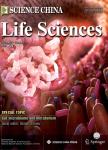The effect of pregnancy on paternal skin allograft survival
The effect of pregnancy on paternal skin allograft survival作者机构:1. Kidney Disease Center First Affiliated Hospital Zhejiang University School of Medicine Hangzhou 310003 China 2. Key Laboratory of Multi-organ Combined Transplantation Ministry of Health Hangzhou 310003 China 3. Key Laboratory of Xinjiang Endemic and Ethnic Diseases Ministry of Education School of Medicine Shihezi University Shihezi 832003 China
出 版 物:《Science China(Life Sciences)》 (中国科学(生命科学英文版))
年 卷 期:2009年第52卷第11期
页 面:1011-1015页
核心收录:
学科分类:1001[医学-基础医学(可授医学、理学学位)] 100102[医学-免疫学] 10[医学]
基 金:Supported by the National Natural Science Foundation of China (Grant Nos. 30471641 and 30872389) the Natural Science Foundation of Zhejiang Province (Grant No. Y207088)
主 题:regulatory T cells pregnancy maternal-fetal tolerance transplant tolerance survival MLR paternal skin allograft mice
摘 要:Elucidation of maternal-fetal tolerance mechanisms clarifies the role of regulatory T cells (Treg) in transplant tolerance. This study aim to investigate the effect of pregnancy on paternal skin allograft survival. Flow cytometry techniques, mixed lymphocytes reaction (MLR), PCR, real-time PCR and skin transplantation were key methods. Treg increased significantly from 4.2% before pregnancy to peak at 6.8% day 8 after pregnancy. Both heme oxygenase-1 (HO-1) and indoleamine 2,3-dioxygenase (IDO) mRNA express high in placenta while low in spleen (P0.05). Although Treg increased during pregnancy, and splenocytes from the pregnant mice showed lower MLR response toward the paternal stimulator, single time pregnancy showed no significant protective effect on paternal skin allograft survival in the tested condition.



